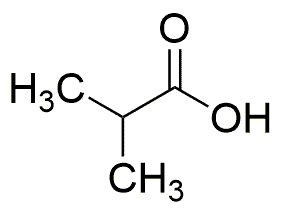Isobutyric acid is widely utilized in research focused on:
- Food Industry: It serves as a flavoring agent and preservative, enhancing the taste of various food products while also extending their shelf life.
- Pharmaceuticals: This compound is used in the synthesis of various drugs, particularly in the production of anti-inflammatory medications, providing a crucial building block for active pharmaceutical ingredients.
- Cosmetics: Isobutyric acid is incorporated in personal care products for its emulsifying properties, helping to stabilize formulations and improve texture.
- Polymer Manufacturing: It plays a role in the production of certain polymers and resins, contributing to the development of materials with desirable properties such as flexibility and durability.
- Agriculture: The compound is used in the formulation of herbicides and pesticides, enhancing their effectiveness and helping to improve crop yields.
General Information
Properties
Safety and Regulations
Applications
Isobutyric acid is widely utilized in research focused on:
- Food Industry: It serves as a flavoring agent and preservative, enhancing the taste of various food products while also extending their shelf life.
- Pharmaceuticals: This compound is used in the synthesis of various drugs, particularly in the production of anti-inflammatory medications, providing a crucial building block for active pharmaceutical ingredients.
- Cosmetics: Isobutyric acid is incorporated in personal care products for its emulsifying properties, helping to stabilize formulations and improve texture.
- Polymer Manufacturing: It plays a role in the production of certain polymers and resins, contributing to the development of materials with desirable properties such as flexibility and durability.
- Agriculture: The compound is used in the formulation of herbicides and pesticides, enhancing their effectiveness and helping to improve crop yields.
Documents
Safety Data Sheets (SDS)
The SDS provides comprehensive safety information on handling, storage, and disposal of the product.
Product Specification (PS)
The PS provides a comprehensive breakdown of the product’s properties, including chemical composition, physical state, purity, and storage requirements. It also details acceptable quality ranges and the product's intended applications.
Certificates of Analysis (COA)
Search for Certificates of Analysis (COA) by entering the products Lot Number. Lot and Batch Numbers can be found on a product’s label following the words ‘Lot’ or ‘Batch’.
*Catalog Number
*Lot Number
Certificates Of Origin (COO)
This COO confirms the country where the product was manufactured, and also details the materials and components used in it and whether it is derived from natural, synthetic, or other specific sources. This certificate may be required for customs, trade, and regulatory compliance.
*Catalog Number
*Lot Number
Safety Data Sheets (SDS)
The SDS provides comprehensive safety information on handling, storage, and disposal of the product.
DownloadProduct Specification (PS)
The PS provides a comprehensive breakdown of the product’s properties, including chemical composition, physical state, purity, and storage requirements. It also details acceptable quality ranges and the product's intended applications.
DownloadCertificates of Analysis (COA)
Search for Certificates of Analysis (COA) by entering the products Lot Number. Lot and Batch Numbers can be found on a product’s label following the words ‘Lot’ or ‘Batch’.
*Catalog Number
*Lot Number
Certificates Of Origin (COO)
This COO confirms the country where the product was manufactured, and also details the materials and components used in it and whether it is derived from natural, synthetic, or other specific sources. This certificate may be required for customs, trade, and regulatory compliance.


